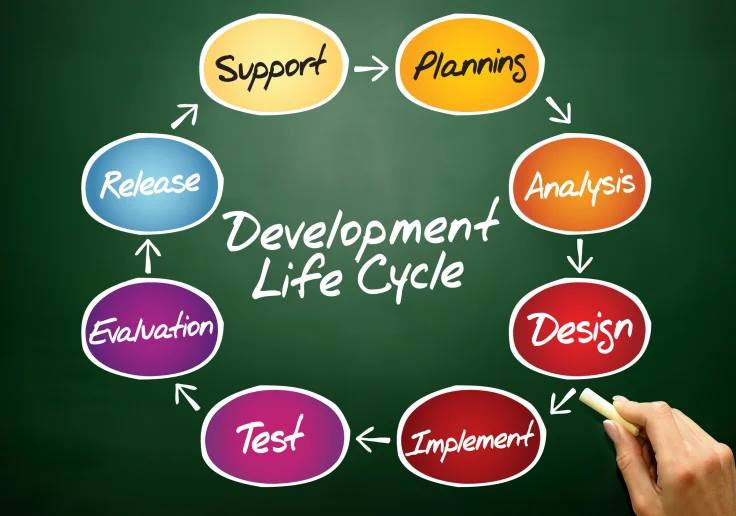Implementing a Platform as a Service product can be a big benefit for companies with sights set on effective, efficient application development, but there are certainly challenges to consider. Before going live with a particular PaaS product, be sure to spend time considering the potential drawbacks of doing so. On the other hand, PaaS may not be well suited for organizations that require higher levels of customization or control. It’s important to carefully consider your needs and the features offered by PaaS providers before investing in this technology.

This means software can be accessed from any device with an internet connection and web browser rather than just on the local machine where it’s installed, as with traditional software. When we talk about a cloud service, we mean any computing solution that’s delivered over the internet. This could be in the form of software, databases (DbaaS), platforms, infrastructure, mobile advantages and disadvantages of paas backends (MbaaS), functions (FaaS), or serverless computing. The cloud infrastructure can be private, public, hybrid, or even within a community of organizations. Users don’t have to download and install SaaS applications on local devices, but sometimes they may need plugins. SaaS software resides on a remote cloud network and can be accessed through the web or APIs.
PaaS: Platform as a Service
In a way, PaaS acts like a host with a lot of extra goodies coming with the package! Because of its relatively low cost, it has been considered an alternative for hosting high-cost traditional applications as well as web applications. Except for Zimki, between the years 2005 and 2008, PaaS was still a new concept in software engineering.

Every service provider should aim to go further than simply deploying an app or a database and this is why PaaS was created to be more than just an abstraction of infrastructure or a cloud platform. At its core, PaaS provides a faster and easier way for businesses to build and run applications. MPaaS is the use of a paid integrated development environment for the configuration of mobile apps. MPaaS is delivered through a web browser and typically supports public cloud, private cloud and on-premises storage.
PaaS Model Definition
These follow the same principle – they sell you special kits of hardware or software precisely for your needs, which is much simpler than if you’d scrounge all over for them. It must be evident to any rapidly growing business that an online presence is highly beneficial and lucrative. You must have sale and marketing solutions online that belong to you, otherwise, you’ll lose potential results and maybe even break your business. It is always easier to ask for the clear advantages and disadvantages of a given technology but the line between those two isn’t always clear. One characteristic of PaaS that is considered an advantage in one scenario might be a disadvantage in another—it really does depend on the use case.
- Platform as a Service vs. Infrastructure as a Service gives less control to the user, but Platform as a Service vs. Software as a Service gives more control to the user.
- This ensures that only authorized users have access to your app’s data and resources.
- PaaS can also be used to reduce an application’s time to market by automating or completely eliminating housekeeping and maintenance tasks.
- Finally, PaaS solutions can sometimes be difficult to integrate with existing systems.
- This model of cloud computing is, perhaps, the most advantageous for creative developers and companies that need custom solutions.
- Clients don’t have any role to play in the cloud model and they can only access the program to finish their work tasks.
This can be a major disadvantage for startups or small businesses that don’t have a lot of capital to invest in PaaS solutions. For example, if a company wants to create an app for both Android and iOS, it can easily do so with a PaaS solution, allowing them to reach a wider audience. For example, developers can use open-source tools and languages such as Python, Ruby on Rails, and Node.js on many PaaS platforms. You free up time and energy by not having to worry about monitoring, maintaining, and updating a development platform, allowing you to concentrate on your main line of business.
Data Security
Further, many private cloud providers can offer both limited and expansive PaaS options to ensure app development works seamlessly with IaaS products for a cohesive and comprehensive approach to computing. For businesses with significant custom development needs, making the move to PaaS can be a wise business decision. The global PaaS market size was valued at $44 billion in 2020, and is projected to reach $319 billion by 2030. The market is expected to increase due to the demand for cloud-based solutions and services, particularly from small and medium businesses that are looking for cost-efficient ways to develop and deploy applications.

As mentioned above, PaaS does not replace a company’s entire IT infrastructure for software development. PaaS can be delivered through public, private and hybrid clouds to deliver services such as application hosting and Java development. The risks of PaaS can be minimized by fully assessing the costs of using PaaS tools for application development and deployment.
What’s Included in PaaS?
It involves the automatic allocation and release of the necessary resources, depending on the number of users served by the application. Which is why any business can scale easily at any time without the fear to become the victim of its own success. As with other cloud computing offerings, using PaaS means that developers can get straight to the business of creating without worrying about the administration, maintenance and security issues. PaaS can take a company to the next level as it allows organizations to automate backend processes and provides the necessary building blocks to respond to demand. Read on to learn exactly what PaaS is, the benefits it offers an organization, the challenges it
may present along with common examples and emerging tech. It sounds like a win-win, but top talent with cloud computing skill sets and experience is still hard to find.
PaaS does away with the requirement to have a specialized crew to regularly manage environments. With so many external dependencies, it becomes very difficult to upgrade technology often. Sometimes individuals within the same organization would disagree as to what security issues should be given priority. However, there are a lot of things to think about when deciding whether to apply a PaaS https://www.globalcloudteam.com/ model to a business. Along with IaaS and SaaS, PaaS appears as another option to optimize processes, generate savings in the production chain and give impetus for companies to grow in a sustainable and scalable way. Professionals involved in the tasks of development, testing, maintenance, delivery and support can collaborate without losing sync, even if they are in different locations.
Advantages of IaaS:
It’s not surprising that newer cloud models are entering the space that work alongside IaaS. Containers and serverless architecture are two such service models giving companies new options for how to run their applications. At this point, simple
IaaS solutions continue to be the most mature option, but trend spotters are keeping their eye on containers and serverless architecture as new and emerging technology. Forbes experts predict that 83% of enterprise workloads will be in the cloud by 2020. Worldwide spending on public cloud services and infrastructure, according to the IDC report, was forecast to reach $160 billion in 2018.

What PaaS really brings to the table is the added value of user experience, which is crucial for the use of any cloud computing services. PaaS takes into consideration the Software Development Life Cycle (SDLC) and the developer experience, more than anything else. Enteriscloud offers high-performing cloud migration, recovery, and storage solutions to keep your database secure and cloud optimized. All of the platform components, including operating systems, server software, firewalls, and security measures, are managed by PaaS. For all practical purposes, PaaS is a third-party resource — a business partner — upon which the user’s business depends. In the case of a private PaaS where an organization will build its own platform, the provider and the user, or customer, are the same.
What is PaaS (Platform as a Service):
Like any cloud-based service, a good pass is available at all times, anywhere, including allowing multiple developers to work on one code at the same time. In addition, there is no need to direct a large team to monitor and perform equipment maintenance. These processes are directed at the service provider, which improves the company’s focus on strategic routines. The business will only pay for the resources that will be used, that is, the subscription to the services has a price that changes according to the demand for technology. A new platform is a new environment where legacy solutions are supposed to continue to work.




